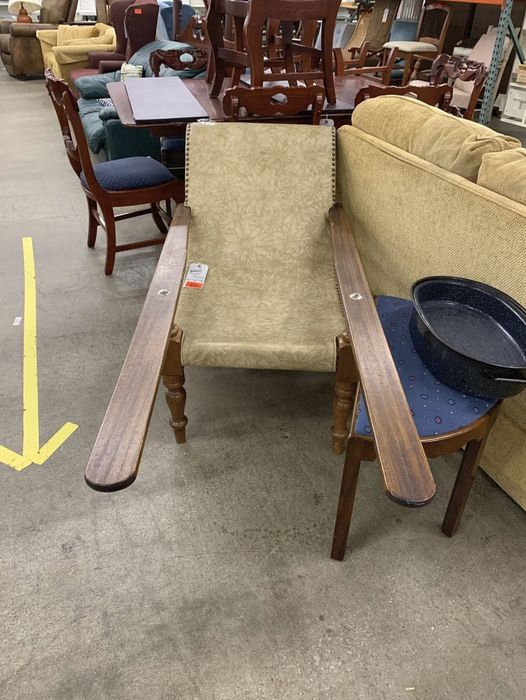Uncovering the story behind the chair with the unusually long arms reveals a fascinating glimpse into the practical and thoughtful design principles of a bygone era. Known today as the plantation chair, this unique piece of furniture emerged during the colonial period and was crafted specifically to meet the physical demands of plantation owners, or planters, who would spend long days and nights riding across their vast lands.

After enduring the strain of hours on horseback, many of these individuals returned home with sore, swollen legs in need of relief. Enter the plantation chair—a cleverly designed seating solution that prioritized comfort and health long before modern ergonomic studies became common practice. At first glance, the most eye-catching feature of this chair is its extra-long arms, which are more than just decorative flourishes. These elongated armrests served a critical function: they allowed the user to elevate their legs while reclining in the chair, helping to promote blood circulation and reduce swelling in the lower extremities. This thoughtful element of design turned a simple chair into a restorative tool, bridging the gap between furniture and functional wellness.
The chair’s backrest is equally intentional in its construction. With a gradual, sloping incline, the seat subtly encourages the user to lean back into a reclined position. Sitting upright is not only less comfortable in this chair, but it also goes against the intended use. Instead, the user is naturally guided into a posture that supports relaxation. Combined with the raised arms, the design offers an ideal setup for resting one’s legs and letting the body recover. In the hot, humid climates where these chairs were most often found, the open, elevated posture also contributed to better air circulation, keeping the user cooler and more comfortable. The plantation chair stands out as a remarkable example of how form and function can come together in a truly meaningful way.
Each curve, each extension, and each angle was carved with a deep understanding of how the human body responds to rest and support. This chair isn’t merely an antique—it is a testament to a time when artisans intuitively grasped the connection between good design and well-being. These craftspeople may not have had access to modern research or scientific terminology, but their hands knew how to shape wood into something that could soothe the aches of a long day. Today, plantation chairs are highly sought after by collectors and interior designers alike. Their distinct silhouette and historical value make them prized additions to curated spaces.
However, their appeal extends beyond aesthetic charm. What draws people to these chairs is the rich history embedded in their structure—a reminder that furniture was once made with the user’s everyday needs in mind. Long before the advent of smart furniture with built-in speakers or USB ports, designers were already thinking smart by focusing on human-centered functionality. As we fill our homes with sleek, modern furniture that often emphasizes appearance over utility, the plantation chair offers a valuable lesson. It shows that intelligent design doesn’t always involve technology. Sometimes, it’s about understanding the human body and crafting something that meets its needs in the simplest yet most effective way. The plantation chair, born out of necessity and refined through craftsmanship, is a perfect example of this philosophy. It invites us to look back with admiration while also encouraging us to carry these principles into the future of design. With its elongated arms, sloping back, and rich story, the plantation chair reminds us that the best furniture serves more than just a decorative purpose—it enhances the lives of those who use it in meaningful, lasting ways.





